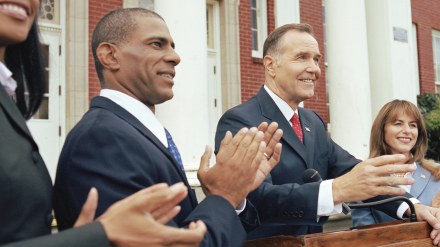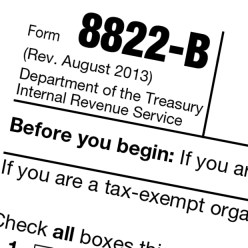News stories of child molestation in the church cross our desk with alarming regularity. Recently prominent churches in the Midwest and South have been tragically shaken by allegations of criminal sexual conduct. Because of pending litigation and privacy issues, churches are reluctant to share the details of their experiences.
But Leadership Journal came across a story that has run the circuit of accusation, investigation, and resolution. Mike Woodruff obtained permission to write the story of a church on the West Coast that lived through this crisis. As Mike relays the pastor’s story, we’ve interspersed the counsel of Dennis Kasper, an attorney specializing in church crisis management, who comments on the steps necessary in responding to charges of sexual misconduct with a minor.
The pastor’s story: Mike Woodruff
Our youth intern is in jail, two boys are in therapy, and one family has left the church. What started out as the renewal of our middle school ministry ended in shameful tragedy.
I had no indication anything was wrong until the day our 25-year-old youth intern, Roy, asked for a meeting with the pastoral staff. As we gathered on that Wednesday afternoon nearly five years ago, our jaws dropped open and our mouths went dry as Roy began confessing inappropriate, make that horrific, actions, including smoking marijuana with a 15-year-old student and renting a hotel room so the two of them could drink beer and watch R-rated movies.
But the worst was yet to come.
Dennis Kasper
Later that week, Roy was arrested on five felony counts of child molestation. Because the youth in question was a member of our church, and because Roy claimed that the molestation charges were false, we were faced with a complicated crisis. The watchful eye of the press ensured the crisis would be public.
The attorney’s analysis
In such a situation, several concerns must be kept in mind: the initial crisis response, communication, the ensuing investigation, and resolution, including ministry to the involved parties and their families. Each concern is loaded with legal and spiritual ramifications.
Numerous people are involved: the victim, the victim’s family, the accused, the accused’s family, witnesses, other students and parents involved in the youth group, the church, the authorities, the media, and the community. Prepared leadership, coupled with wise legal counsel, can manage these concerns.
Woodruff: Roy came to us on an unpaid internship from our denominational seminary. We welcomed him onto our staff after we had contacted previous employers and run a criminal background check, which he passed.
Roy jumped into the job with great vigor, quickly forming friendships with a number of the kids. He was especially determined to win his way into the lives of those on the fringes. Roy spent the most time with a boy named Jessie, a 15-year-old from a single-parent home whose mother attended our church.
What happened next depends on whose account you believe. According to Roy, trying to fit into the lives of the youth mushroomed into an unhealthy desire for acceptance. Jessie took advantage of that weakness, manipulating Roy into purchasing cigarettes for him, then providing alcohol, and eventually smoking pot with him. Roy claims he was motivated solely by a desire to befriend Jessie and see him turn his life around. He described a desperate attempt to shake Jessie loose from the grip of drug use.
“Jessie, I’d do anything to get you off of drugs.”
“Okay, I’ll quit. Just smoke pot with me one time, and I’ll quit.”
Roy did.
When Jessie didn’t keep the promise to stop doing drugs, Roy confronted him. “Look, Jessie, I can’t keep quiet about this. You’re hurting yourself. I’m going to have to bring your mom and the other pastors into this.”
“If you do,” Roy claimed Jessie said, “I’ll tell them you smoked pot.” Right then Roy realized his mistakes were going to mean trouble.
Roy claims he was blackmailed by Jessie and duped into a downward spiral of poor decisions until the gravity of the situation forced him to confess. “I didn’t feel like I had a choice,” says Roy. “Things were out of control. I was so sick of what was going on, but I didn’t see a way out.”
The events culminated when Roy—who was boarding with someone from the church—rented a hotel room as a “safe” place to drink with the youth. During their second drinking party, they also watched movies with graphic sex scenes. Roy claims Jessie was drunk and began to masturbate. When he couldn’t talk Jessie out of it, Roy locked himself in the bathroom for an hour.
“I was shaking and sweating and throwing up,” claims Roy. “I knew things were over, one way or the other.”
Two days later, Roy asked for the meeting that shocked our staff.
Jessie’s account is considerably more sordid, and involves charges of molestation. It suggests Roy was a crafty manipulator who was grooming Jessie for a homosexual encounter from the beginning.
Kasper: What do you do in this situation? Given the conflicting accounts, how do you juggle lawyers, reporters, counselors, gossips, victims, an accused staff member, and a church on the side?
The fact is, no one is completely capable of dealing with situations this complicated, this significant, and this demanding of time and resources. For that reason, I urge churches to form a Crisis Response Team. The response team’s job is to move quickly to address all the previously stated concerns in a unified way, while minimizing disruption and damage.
A crisis necessitating a response team doesn’t have to involve sexual misconduct. A crisis is any unplanned event that presents either a significant risk or a significant distraction to the church. By that definition, crises may include natural disasters, accidents, misconduct, strife, and a host of other possibilities.
The Crisis Response Team should be appointed by the pastor and/or board and consist of several key people:
- a member of the pastoral staff (if possible)
- a member of the church governing board
- someone with excellent writing and verbal communications skills
- someone with pastoral care or mental health care skills
- someone with legal or investigative training
- someone with a heart for intercessory prayer
Experience has taught me that this group should not include the entire staff, because the pastors’ energy and focus will be demanded elsewhere.
These members need not meet regularly, but must be available to drop everything and meet immediately in time of crisis. Meeting the same day of a crisis, or at the latest the next day, can be crucial. Particularly in misconduct cases, word of the crisis spreads quickly (often through the victim’s family), and the law may dictate the church take immediate action.
When activated, the Crisis Response Team should have the authority to make quick and ongoing decisions. They should report regularly during the crisis to the pastor and board.
In the case involving Roy, an impromptu response team was formed out of the available pastoral staff. While this can work, I would recommend pre-selecting, and possibly even pre-training, a group of respected, mature, and level-headed people to fill out the team.
Crisis response
Woodruff: After a quick huddle with the pastoral staff, we called Jessie’s mother and accompanied Roy while he shared the “facts” as we now had them. That evening she confronted her son, who offered his completely different account. They immediately asked to meet with us to explain his side of the story.
With the surfacing of molestation allegations, we had no choice but to phone the police.
At the advice of our denominational leaders, we also prepared a statement for the press, notified our insurance company of a possible lawsuit, and prepared a letter to the entire church explaining as much as we could be certain of.
Kasper: The church was wise to respond swiftly. With the possible exception of trying to conduct their own investigation, they handled the situation reasonably well and took steps to protect themselves legally.
Several actions are key to handling a crisis well. Having a several-member response team will enable you do these things quickly.
1. Meet immediately with legal counsel. It is unlikely someone within the church will be sufficiently trained to handle this kind of situation—consult someone specializing in church crisis management. You will want to specifically discuss issues of how to protect the work of the team under the attorney/client privilege.
2. Determine if any criminal report is required. Many states mandate reporting incidents involving minors immediately. Attorney Stephen Chawaga warns, “Failure to take action after hearing of a complaint, or turning a blind eye to misconduct a later investigation reveals, practically guarantees that your church will be sued” (“The Ten Deadly Lawsuits,” Your Church, May/June 2001).
3. Advise the accused to seek an attorney. Especially in the case of criminal allegation, the church can have no part in offering the accused what may be construed as legal counsel.
4. Contact your church’s insurance company. Most church insurance providers protect against certain lawsuits. Just as you would contact your auto insurer in case of accident, contact the church’s insurer to guide you through the necessary steps to ensure coverage.
5. Assign liaisons. A point person should maintain regular contact and provide pastoral support to the victim and the victim’s family. A different person should do the same for the accused.
6. Develop a plan of communication. Select a point person to handle communication specifically with the church, the media, the authorities, and the lawyers. Agree upon what, to whom, and how communication will be offered. Generally, the closer a person is to the situation, the more detail they need to know.
7. Develop a plan for further investigation. A church should not try to investigate the guilt or innocence of the accused. Criminal investigation must be left to the authorities. But it is important for a church to determine if there are any other victims.
8. Make counseling available. Prepare, practically and financially, to provide professional counseling for the victims, victims’ families, and other affected youths in the program.
Communication strategy
Woodruff: As soon as charges were filed, we began to receive phone calls from local radio stations and newspapers. We had anticipated this. Our staff agreed that only one person would act as the spokesman for the church, and all requests for information would be channeled to him. This helped us avoid issuing contradictory statements and put our best communicator in the spotlight.
We took the stance that the media was a neutral party and that certain questions needed to be answered publicly. Nonetheless, we guarded our words to protect privacy and to avoid issuing opinions or speculation.
On the Sunday following Roy’s arrest, we spent the entire Sunday school hour in a forum with the church body answering questions about the charges. We needed to squelch rumors and provide as many facts as we could. We held a similar session during youth group later that week.
At each forum, I read the prepared statement, which included a summary of the accusations. I informed the congregation of the likelihood of a police investigation and upcoming legal action. I asked them to pray for both parties. Then we opened the forum for questions.
The silence was thick.
After a long, torturous pause of shuffling bulletins and echoed coughs, the first question came. “Are we vulnerable to a lawsuit?”
“Yes.”
“What are our obligations to the accused?”
That was a harder question. Our primary responsibility had to be to Jessie and his family. It hurt to say it, but we had no obligation to Roy. Our attorney advised us that it’s considered an improper use of charitable funds to defend criminal activity. We recommended to Roy that he get his own legal counsel. So our contact with Roy would be limited.
“What did we do wrong?” someone asked. “How could this happen?”
That was the hardest question of all. We didn’t have any answers. Yet.
Kasper: The church handled this situation well. Observe each of their choices: they prepared formal statements, limiting such revelations to fact; public communication was directed to one designated spokesperson; they remembered that both the victim and the accused have certain rights to privacy (for instance, a minor cannot have his identity shared); they sought to stay ahead of the gossip curve by providing facts on a “need to know” basis and quelling speculation; and finally, a method was developed for the church and concerned people to question the response team.
Two further points need addressing. First, do not assume either party is telling the whole truth. Often, a victim isn’t entirely forthcoming. In the effort to protect themselves and avoid blame for certain events, both the victim and the accused may tell only part of the story. A church cannot get caught up in the “he said, she said” game and should avoid all temptations to determine guilt or innocence.
Second, realize those closest to the situation need the most information, while those furthest removed need the least. It is unwise (and sometimes unlawful) to share details with the public. More information needs to be shared with the church, then more with the youth group, and more still with the families involved.
For instance, a media statement may include the fact that there’s been an allegation, that a crisis response team is evaluating appropriate actions, and that the church is offering professional counseling to potential victims—nothing more. The church may be informed additionally of the response team’s names and dates for communication forums. The youth group’s parents will need assurance that actions are being taken to protect their children.
The victim’s parents need to know what care and counseling is available to them and their child.
Investigation
Woodruff: Roy’s prosecuting attorney later spoke of how we handled the allegation:
“The one mistake the church made was in starting to conduct the investigation themselves. Church staff are not prepared for this type of work, and instead of trying to find out what actually happened, they should have immediately called the police. You are free to tell the person that you are going to report them, but you cannot fail to report them just because they claim innocence or state that a false accusation will ruin them.”
Kasper: A church must never attempt to determine if the accused is guilty of a crime. That’s the job of the police. Any attempt to determine guilt puts the church in the precarious position of becoming a witness in a criminal case. When there are criminal allegations, your church’s first steps are clearly defined: call your lawyer, call the authorities, and advise the accused to seek his or her own attorney.
There is, however, an important place for investigation in these matters. The investigation’s purpose is not to determine guilt. Instead, an investigation should be conducted to determine if other victims are involved, to determine if disciplinary action needs to be taken, and to determine if church procedures need to be changed.
To determine if there are any other victims, I recommend publicizing the provision of mental health care, as victims may be more likely to come forward to get help. It is important to discover who has been affected by the actions in question.
Often, even without being found guilty of a crime, the accused merits discipline (i.e. firing) for violating clear church policy. Occasionally, action needs to be taken against other staff members or volunteers as well. Even as an unpaid intern, Roy could have been fired for committing a crime (providing cigarettes and alcohol to a minor), since that was admitted by all parties. In other cases, even without determining guilt, grounds for firing can be met on the basis of inappropriate advances, unsupervised contact, or wrongful counsel. Formal action should only be taken after consulting your lawyer to avoid violating employment law.
Obviously, an investigation may reveal that the church needs to change its supervision or accountability policies. Perhaps an investigation will reveal the need to redefine or clarify church policy regarding sexual boundaries and misconduct.
Lastly, make sure to coordinate the investigation with your lawyer. You may want to discuss the specific questions being asked of interviewees, how to take and legally protect the notes from those conversations, how to protect the investigators via attorney/client privilege, and how to protect the accused’s Fifth Amendment rights.
Resolution
Woodruff: The three months leading up to the trial were tense, to say the least. People constantly wanted updates. A few criticized us for not publicly backing Jessie, but as church leaders we needed to maintain a legal neutrality. I did, however, spend considerable time privately counseling and supporting Jessie’s family.
Most of our criticism came from those who thought we weren’t doing enough. Jessie’s family was angry for not receiving more support from church members. Though we couldn’t publicly name Jessie, still his family argued, “Everyone knows by now. Why aren’t people reaching out to us?” Roy’s family was also angered that we didn’t provide financial help with legal fees.
And we faced the lingering question, “How could this happen?”
Our staff eventually determined there were several changes in policy that needed to be made to infuse our youth ministry with more accountability, rules, and supervision.
The church also offered to pay for all of Jessie’s family’s counseling, but we did not pay for Roy’s. Some church members attempted to stay in touch with him, and I prayed with him on several occasions, but knowing I might be subpoenaed, I found it difficult to offer any meaningful care.
At the eleventh hour, the prosecution offered to drop all of the child molestation charges if Roy would plead guilty to lesser offenses. The family was not out for vengeance, and they did not want to drag Jessie through a trial that would likely turn nasty. Roy accepted the plea bargain and was sentenced to one year in the local jail.
Remarkably, the entire crisis was weathered without a lawsuit and without any noticeable exodus from the church or the youth program.
Kasper: Crises do not simply go away when the storm blows over. Communication and ministry needs continue. The Crisis Response Team should continue to meet and report regularly during the aftermath. The point people assigned to the victim and the accused should continue to meet with their assigned person to keep communication flowing. The families and congregation should receive regular updates. Providing counseling for the victims, witnesses, and their families is essential.
Furthermore, as the situation draws to a close, the team should meet with their attorney to determine what was handled well, and what things need to be done differently, both now and in the future.
Finally, the results of the investigation should prompt decisions and policy changes as necessary. It may be considered by many a healing balm to know that the church is taking steps to prevent this kind of tragedy from happening again.
Woodruff: Like any group that has weathered a storm like this, we examined both the events leading up to the crisis and our response to it. Our staff met to discuss these issues. There were a few things we did right with Roy, actions that prevented the situation from being much worse. But we also made some grievous mistakes that needed to be corrected.
Our largest mistake was allowing Roy to operate with too much autonomy. We had accountability meetings with Roy, thinking that was sufficient supervision, but we were wrong. Roy was still working as an island. We have since realized that he needed active partnership and mentoring that we didn’t provide. Roy later confessed, “I can’t watch a kid fail. I had a savior complex, and no one ever warned me of the problems that might cause.”
We also encountered a faulty assumption with our church insurance policy. We discovered too late that our policy did not cover any of our staff if we faced criminal charges, only civil ones. Roy was forced to pay for his own legal representation, and we were left vulnerable to a lawsuit. We have since committed to reviewing our policies annually.
Finally, our staff affirmed the necessity of conducting background checks, especially on those who work with children. It’s likely that our thoroughness with Roy’s background check saved us from a lawsuit. Roy’s prosecuting attorney later attested, “The church conducted a decent background check on Roy. They reviewed his employment history, and they phoned the police in those states where he had been previously employed to check on any criminal convictions.”
It has been nearly five years since Roy first confessed to buying Jessie alcohol. Jessie has been greatly helped by counseling, and though he no longer attends our church, his mother told me, “If he stays with God through all of this, it will be because of your care.”
As for Roy, he served his sentence in jail, where he was active in Bible studies and found refuge with God.
He was released after a one year jail term and no longer works in youth ministry.
Drafting a Crisis Team for Your Church
Put this task force in place today—before the crisis comes.
Here’s what you need to do to create a response team.
- 1. Choose your players. Members need to be mature, well-respected, and able to drop everything to dedicate themselves to the process.Your team should include:
- a pastor
- a member of the board
- several excellent communicators
- an prayer leader who can direct an intercessory prayer team.
- 2. Assign key positions (one person per position, and only one position per person):
- a chairperson (not the senior pastor)
- a communications spokesperson who is made accessible to the entire congregation for questions and concerns
- liaisons to each involved person or party.
- 3. Give the team authority, and allow them to act quickly:
- to coordinate legal response
- to communicate to the church, the general public, and media
- to design a plan for further investigation
- to set up counseling for those in need.
—Dennis Kasper









